Over 30 years of anarchist writing from Ireland listed under hundreds of topics
Republicanism
The making of an anarchist in Portlaoise prison
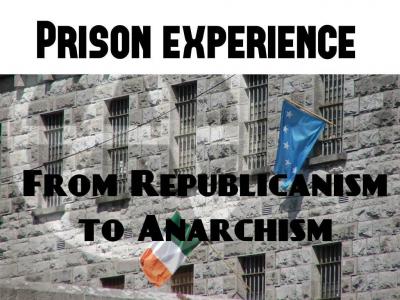 In 2010 I was sentenced to 6 years for having possession of 20 grams of explosive powder. I was to serve 4 years and 8 months in Portlaoise prison. This is not an in-depth study into prison and jails, and it is not an academic piece. It is simply an experience. My experience of jail will be different than other people’s experience because no two people’s experience will ever be the same. The other person’s experience will always be different no matter how great or small.
In 2010 I was sentenced to 6 years for having possession of 20 grams of explosive powder. I was to serve 4 years and 8 months in Portlaoise prison. This is not an in-depth study into prison and jails, and it is not an academic piece. It is simply an experience. My experience of jail will be different than other people’s experience because no two people’s experience will ever be the same. The other person’s experience will always be different no matter how great or small.
My experience started with 3 days questioning in a Garda station in Mountjoy. After the questioning was over I was charged with having an explosive substance, having materials used to build explosives and membership of an illegal organization.
From the Garda station I was brought straight to the special criminal court which was in Green Street courthouse at the time. I was brought to the holding cell, which resembled something out of a cowboy film or a medievil film. There was no door on the cell, there was a gate made from bars. On the wall of the cell were messages written on the wall by people that have come through here, messages of support, people's names with numbers beside their name indicating how many years the person got, names of different republican groups, pictures of soldiers with guns, symbols such as the hammer and sickle.
Remembering 1916 Together: Anarchist Perspectives - video from #DABF 2016
A century ago, an armed insurrection took place in Ireland to end British rule and to establish an independent Irish Republic. The 1916 Rising was soon accompanied by major popular revolts against World War One across Europe and later emulated by anti-colonial movements across the Global South.
When it comes to remembering the 1916 Rising, why do conservative politicians and historians want to convince us that it would have been better for us if Pearse and Connolly had stayed at home? Why did the state parade lots of military equipment and personnel down O’Connell Street to mark the centenary? Why did so many people turn out to watch it?
This panel attempts to think through the meaning of 1916 for us today, and the politics at stake in how these events are remembered, forgotten, and mis-remembered.
A Brief Introduction to Modern Day Irish Republicanism. What Can Anarchists learn from Modern Day Republicanism?
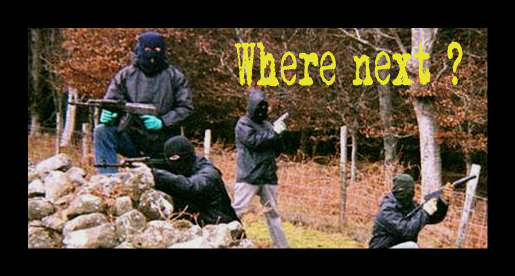 Republican Sinn Fein and the Continuity IRA
Republican Sinn Fein and the Continuity IRA
Republican Sinn Fein (RSF) and the Continuity IRA were established due to a split within Provisional Sinn Fein (PSF). At PSF's 1986 ard fheis, members supported the proposal to drop abstentionist policy (not recognizing the Irish state) in the 26 county state. Those at the ard fheis who were opposed to the policy walked out of the ard fheis and out of the Provisional movement. They went on to create Republican Sinn Fein. The split was a political one so it was mainly members of PSF that left - not many members of the Provisional Irish Republican Army (PIRA) left. They saw the need to create a new organization because they believed PSF had broken from the Republican tradition of abstentionism. The Provisional Movement was created for the exact same reason. The same people that created the Provisionals went on to create Republican Sinn Fein.
Authoritarianism and the early Irish State
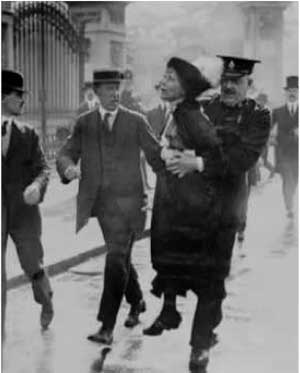 Fin Dwyer looks at the latter years of Ireland’s first post independence government, which having successfully suppressed political opposition and the workers’ movement, went on to “attack women and enforce their moral and ethical values on wider society”. From the clearing of prostitutes from the Monto and the filling of the Magdalene laundries to the institutionalisation of child abuse, he describes how the state’s close association with the Catholic Church played a decisive role in forming attitudes to women and sex that have had a devastating effect on Irish society that can still be felt today.
Fin Dwyer looks at the latter years of Ireland’s first post independence government, which having successfully suppressed political opposition and the workers’ movement, went on to “attack women and enforce their moral and ethical values on wider society”. From the clearing of prostitutes from the Monto and the filling of the Magdalene laundries to the institutionalisation of child abuse, he describes how the state’s close association with the Catholic Church played a decisive role in forming attitudes to women and sex that have had a devastating effect on Irish society that can still be felt today.
Derry and the War on Drugs: An Anarchist View
.jpg) News that the Red Cross, an international humanitarian organisation, have been directly assisting local community workers in the Rosemount area of Derryhas again heightened concerns of a potential “drugs epidemic” developing in the city.
News that the Red Cross, an international humanitarian organisation, have been directly assisting local community workers in the Rosemount area of Derryhas again heightened concerns of a potential “drugs epidemic” developing in the city.
The story first broke over the last few weeks prior to a BBC Spotlight programme investigating the vigilante group Republican Action Against Drugs or RAAD. It revealed that the Red Cross has been working with the Rosemount Resource Centre over the past eight months, believed to be the first time ever the humanitarian group has worked with another organisation in the north.
Torture, Murder & Exclusion: Ireland’s first 10 years of Independence
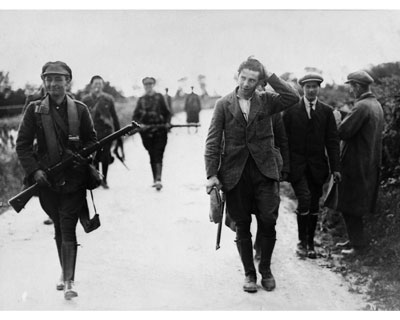 The 1916 proclamation, the manifesto of the 1916 rebels, states: “The Republic guarantees religious and civil liberty, equal rights and equal opportunities to all its citizens, and declares its resolve to pursue the happiness and prosperity of the whole nation and of all its parts, cherishing all the children of the nation equally, and oblivious of the differences carefully fostered by an alien government, which have divided a minority from the majority in the past.”
The 1916 proclamation, the manifesto of the 1916 rebels, states: “The Republic guarantees religious and civil liberty, equal rights and equal opportunities to all its citizens, and declares its resolve to pursue the happiness and prosperity of the whole nation and of all its parts, cherishing all the children of the nation equally, and oblivious of the differences carefully fostered by an alien government, which have divided a minority from the majority in the past.”
These noble aspirations would become almost a bible of Irish Republican ideals and within six years, after the end of the War of Independence in 1922, a section of that movement had a chance to implement these ideals. However the society established after the war of independence “The Irish Free State” was a pale shadow of even the most modest interpretation of this document. Civil liberties were almost non existent, citizens were not equal, with women becoming second class while the poor were plunged further into destitution.
Bloody Sunday in Derry - Origins & Consequences of a Massacre
 On the 30th January 1972 British soldiers opened fire on protesters in the city of Derry, north-west Ireland. Twenty six unarmed protesters were shot, 13 died immediately or within hours, one more died just over four months later. Derry was in the section of Ireland claimed by the British state and the shootings happened in the context of the suppression of a growing civil rights movement demanding equality for Catholics in the 6 of Ulster’s counties claimed by Britain.
On the 30th January 1972 British soldiers opened fire on protesters in the city of Derry, north-west Ireland. Twenty six unarmed protesters were shot, 13 died immediately or within hours, one more died just over four months later. Derry was in the section of Ireland claimed by the British state and the shootings happened in the context of the suppression of a growing civil rights movement demanding equality for Catholics in the 6 of Ulster’s counties claimed by Britain.
The Famine, the Land War & 19th Century Resistance- why is it not happening today
 Over the past three years Ireland has witnessed unprecedented austerity. An aspect that has surprised many people has been the limited and at best sporadic resistance to what has been a savage cut in people’s standards of living. Politicians and the media have on many occasions relished the fact that resistance has been largely ineffectual and isolated, while many left wing activists have been left questioning why most people seem willing to take so much pain.
Over the past three years Ireland has witnessed unprecedented austerity. An aspect that has surprised many people has been the limited and at best sporadic resistance to what has been a savage cut in people’s standards of living. Politicians and the media have on many occasions relished the fact that resistance has been largely ineffectual and isolated, while many left wing activists have been left questioning why most people seem willing to take so much pain.
The republican tradition - a place to build from?
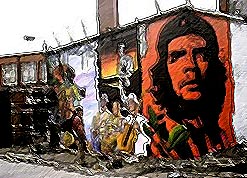 Ireland has an indigenous revolutionary tradition that successfully mobilized tens if not hundreds of thousands in the struggle for more freedom over the 200 years since 1798. Irish republicanism has always included a radical democratic and leveling element and which continues to provide part of the culture of resistance of the most down trodden sections of the working class. Many believe this makes it the best base to build from, at the fifth Rethinking Revolution meeting Andrew Flood asked if they are right? This article contains the draft text of the talk and the audio recording of the meeting.
Ireland has an indigenous revolutionary tradition that successfully mobilized tens if not hundreds of thousands in the struggle for more freedom over the 200 years since 1798. Irish republicanism has always included a radical democratic and leveling element and which continues to provide part of the culture of resistance of the most down trodden sections of the working class. Many believe this makes it the best base to build from, at the fifth Rethinking Revolution meeting Andrew Flood asked if they are right? This article contains the draft text of the talk and the audio recording of the meeting.
Nationalism, socialism and partition
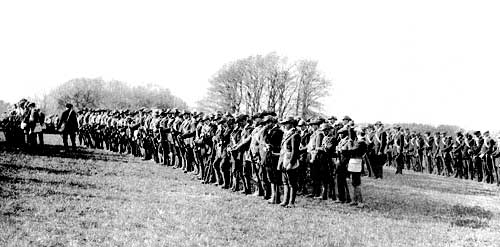 The period of Irish history from the 1880's to the 1920's defined and divided politics including socialist politics, on the island for the rest of the century. The most militant workers struggles occurred in the second half of that period, north and south, concentrated in the last five years. This was also the period of the 1916 insurrection in Dublin, the 1918-21 War of Independence, the treaty and partition of Ireland in 1921 and then in the south the bloody Civil War ending in 1923.
The period of Irish history from the 1880's to the 1920's defined and divided politics including socialist politics, on the island for the rest of the century. The most militant workers struggles occurred in the second half of that period, north and south, concentrated in the last five years. This was also the period of the 1916 insurrection in Dublin, the 1918-21 War of Independence, the treaty and partition of Ireland in 1921 and then in the south the bloody Civil War ending in 1923.
The year 1919 saw the greatest demonstration of the potential of Irish workers, north and south to take over the running of society but the events of the following years cemented the division that would do much to end workers militancy. In terms of working class struggle the periods of militancy of northern and southern workers coincide. Yet the working class was divided and these struggles remained almost completely isolated from each other. (Image: UVF training in 1914)

